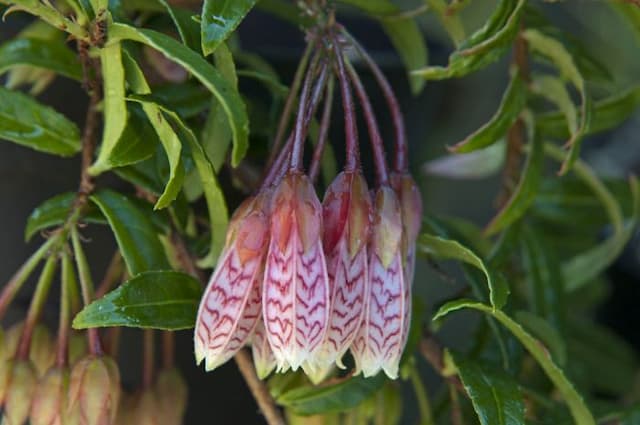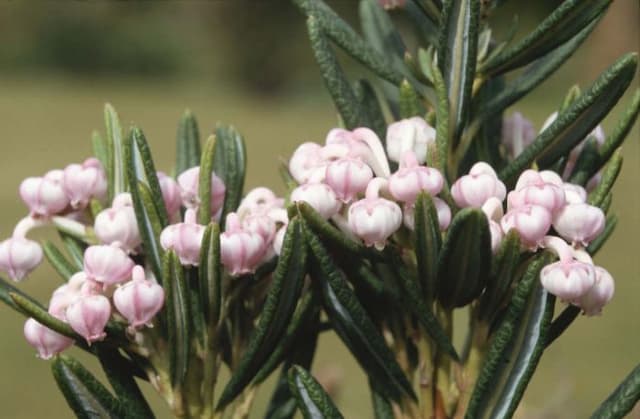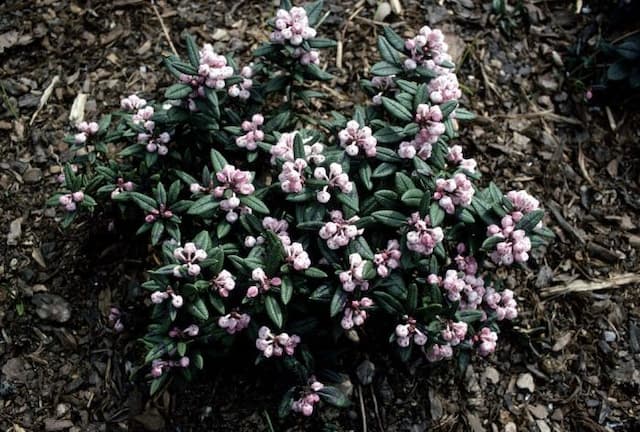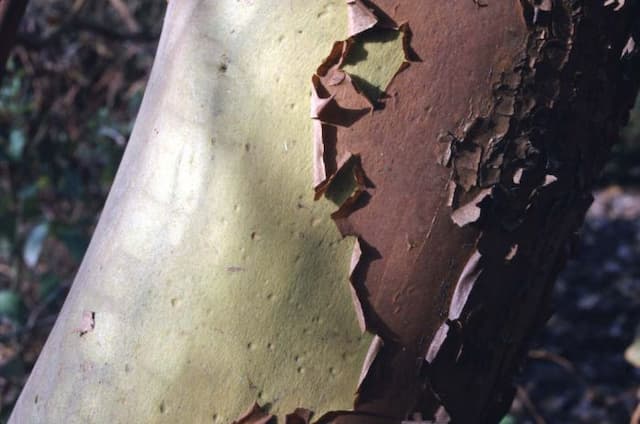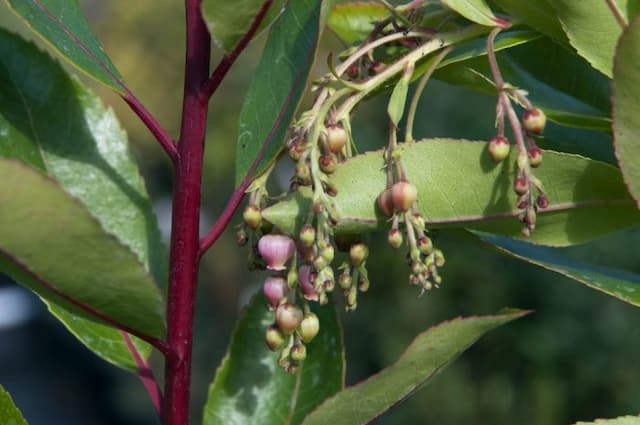Bell Heather Erica cinerea 'Eden Valley'
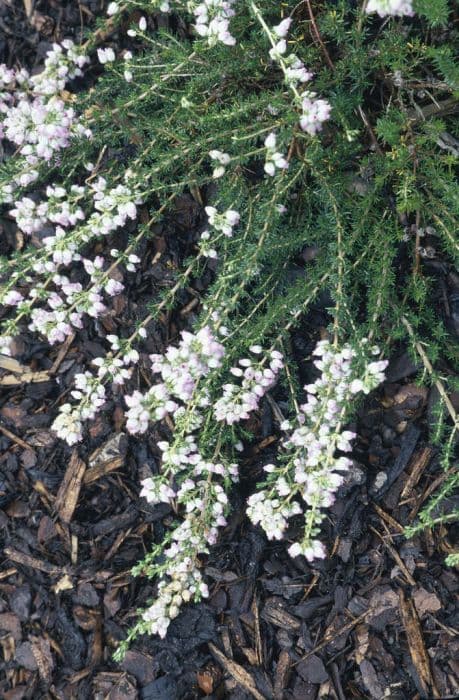
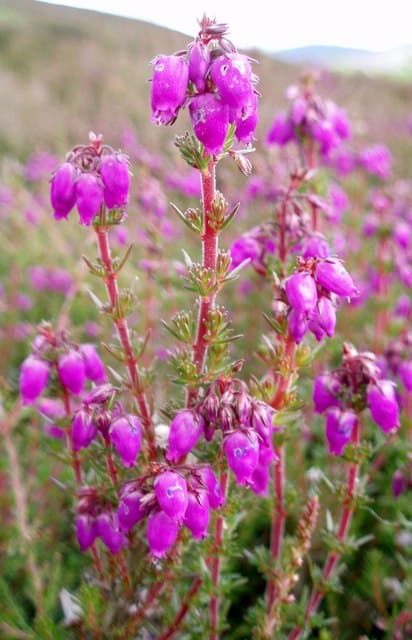
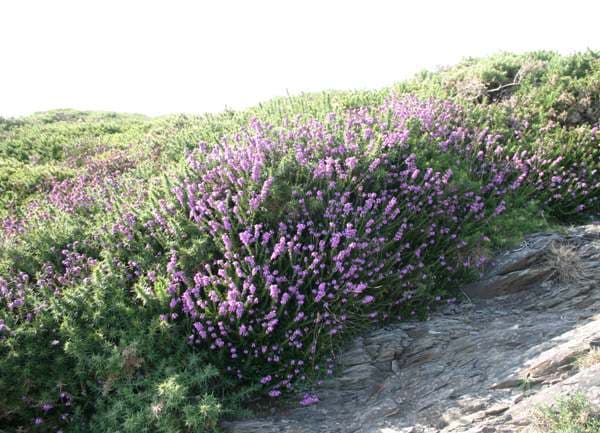
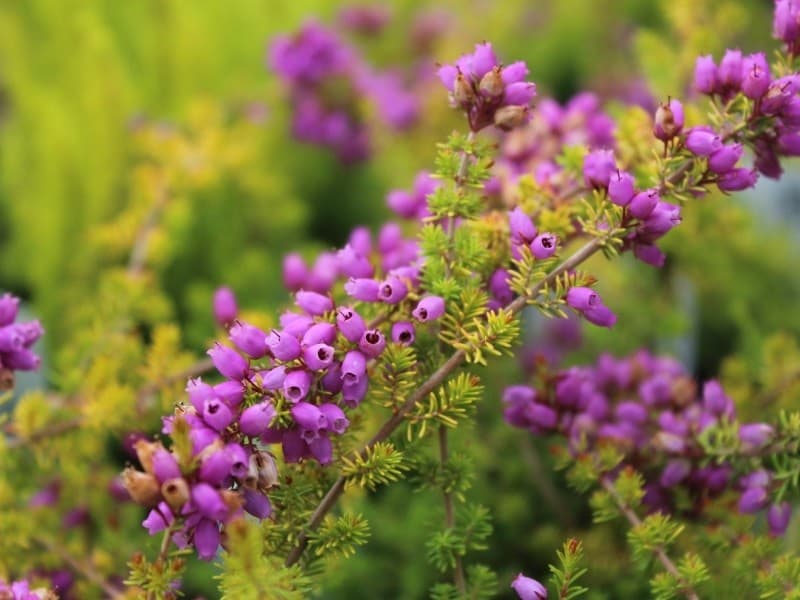

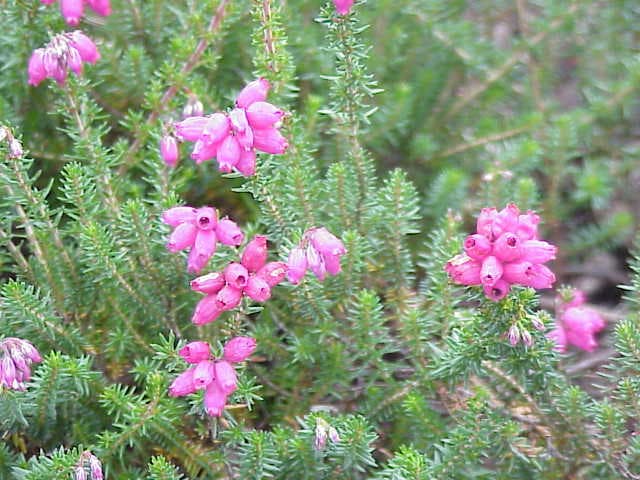
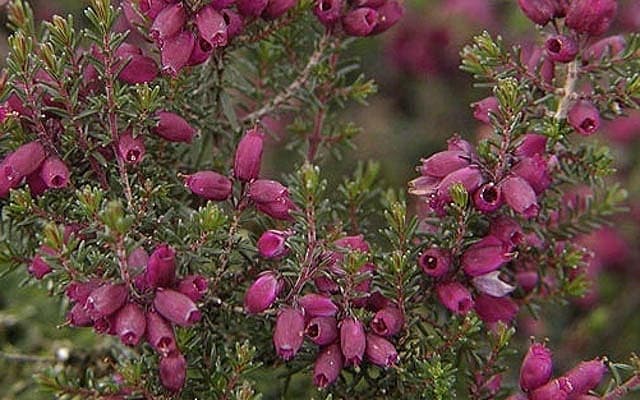
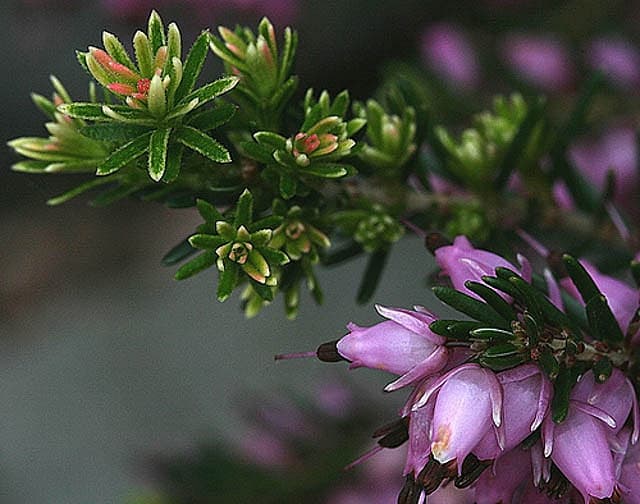
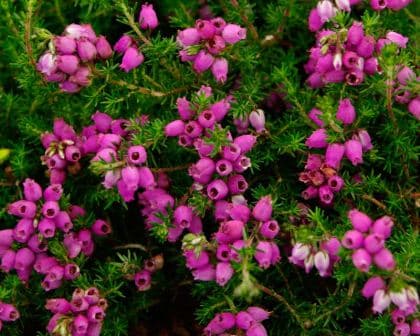
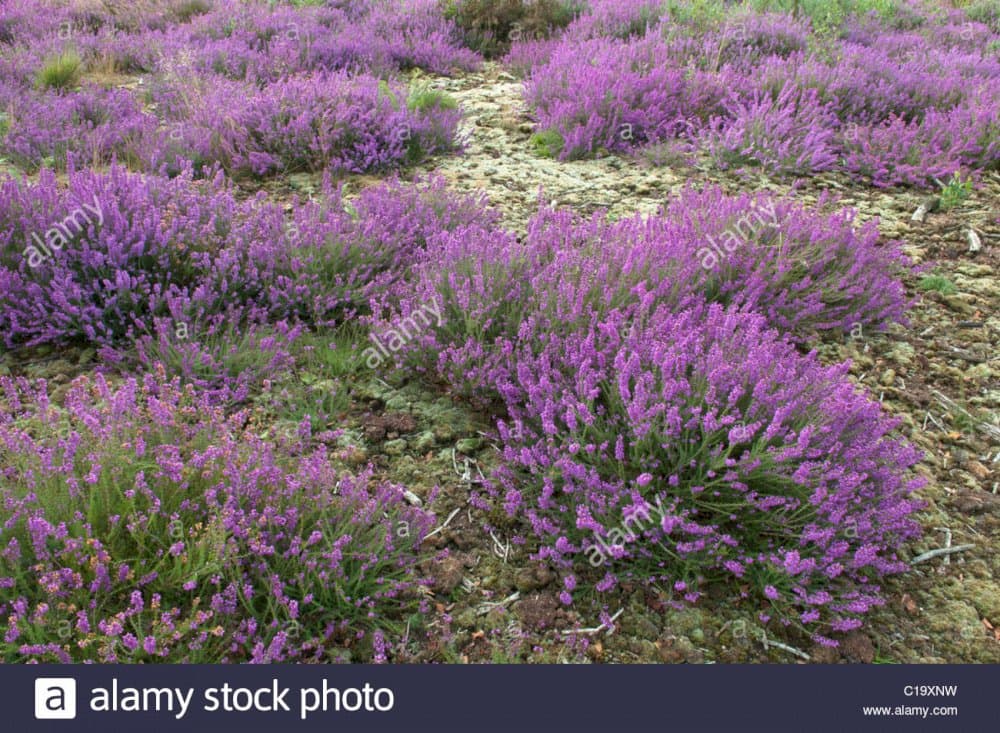

ABOUT
The Erica cinerea 'Eden Valley', commonly known as bell heather, is a beautifully structured plant with a fine, bushy appearance. The foliage of this plant presents itself in needle-like, dark green leaves that provide a dense, evergreen backdrop throughout the year. During the blooming season, the bell heather is adorned with captivating bell-shaped flowers that exhibit a stunning pinkish-purple hue. These abundant blossoms are small yet prominent, densely clustered together, creating a rich tapestry of color that is both vibrant and eye-catching. The overall aesthetic of bell heather is one of delicate grace and natural charm, evoking the wild beauty of its native habitat.
About this plant
 Names
NamesFamily
Ericaceae.
Synonyms
Bell Heather, Twisted Heath.
Common names
Erica cinerea 'Eden Valley'
 Toxicity
ToxicityTo humans
Bell heather is generally not considered toxic to humans. There is no widely recognized evidence of toxicity or poisonous effects from ingesting this plant. If an individual has specific sensitivities or allergies, consuming bell heather might cause a reaction due to those personal conditions, but under normal circumstances, it does not pose a risk of poisoning.
To pets
Bell heather is not known to be toxic to pets either. It is usually considered safe for animals, and there are no common symptoms of poisoning associated with ingestion of this plant. However, as with humans, individual animals may have specific sensitivities, so it's always wise to monitor pets if they consume any plant material.
 Characteristics
CharacteristicsLife cycle
Perennials
Foliage type
Evergreen
Color of leaves
Green
Flower color
Purple
Height
1 foot [30 cm]
Spread
1.5 feet [45 cm]
Plant type
Shrub
Hardiness zones
5
Native area
Europe
Benefits
 General Benefits
General Benefits- Attracts Bees – Erica cinerea 'Eden Valley' is known to attract bees due to its abundant flowers, which support pollinator populations.
- Attracts Butterflies – In addition to bees, the flowers also draw in butterflies, contributing to the biodiversity of the area.
- Drought Tolerant – Once established, this plant has a high tolerance for drought, making it suitable for dry or xeriscape gardens.
- Low Maintenance – It requires minimal care once established, making it a good choice for gardeners who prefer plants that don't need constant attention.
- Evergreen Foliage – Provides year-round interest with its evergreen leaves, offering color and structure during the dull winter months.
- Deer Resistant – Typically resistant to deer, which can be beneficial in areas where deer browsing can damage garden plants.
- Ground Cover – This plant can serve as a good ground cover, spreading across the soil and helping to prevent weed growth.
- Soil Erosion Control – The dense mat of roots can help stabilize soil and prevent erosion on slopes or in areas prone to soil loss.
- Ornamental Value – The plant is highly valued for its pinkish-purple flowers, which add aesthetic appeal to gardens and landscapes.
- Long Blooming – The blooming period of Erica cinerea 'Eden Valley' extends over a long period, often from early summer to fall, enhancing garden color for many months.
- Tolerates Poor Soil – It can thrive in less-than-ideal soil conditions, including acidic and nutrient-poor soils.
- Habitat Enrichment – Provides shelter and food to various small insects and animals, enriching local habitats.
 Medical Properties
Medical PropertiesThis plant is not used for medical purposes.
 Air-purifying Qualities
Air-purifying QualitiesThis plant is not specifically known for air purifying qualities.
 Other Uses
Other Uses- Erica cinerea, also known as bell heather, can be used in floral arrangements to add a delicate texture and a splash of purple color to bouquets and centerpieces.
- The dried flowers of bell heather are often used in crafting, such as in the creation of potpourri, due to their long-lasting color and pleasant appearance.
- The tough, wiry stems of bell heather can be woven into small baskets or decorative items by skilled crafters.
- Bell heather can serve as a natural dye for textiles, providing hues of green and yellow depending on the mordant used.
- When planted in a garden, bell heather can act as a ground cover to prevent soil erosion on slopes or in areas with loose soil.
- Bell heather is sometimes used in model railroading and other dioramas to simulate miniature trees and shrubbery in landscapes.
- The plant can be incorporated into a green roof design for its drought resistance and low maintenance, adding biodiversity to urban environments.
- In gardening, bell heather's evergreen foliage provides year-round interest, making it a valuable addition to winter gardens.
- During traditional festivities, bell heather can be included in wreaths and other decorations as a symbol of good luck and protection.
- Bell heather, when used in a wildlife garden, attracts pollinators like bees and butterflies, contributing to the conservation of these important species.
Interesting Facts
 Feng Shui
Feng ShuiThe plant Bell Heather is not used in Feng Shui practice.
 Zodiac Sign Compitability
Zodiac Sign CompitabilityThe plant Bell Heather is not used in astrology practice.
 Plant Symbolism
Plant Symbolism- Longevity - Erica cinerea, commonly known as bell heather, is a resilient plant that can live for a long time, thus symbolizing endurance and the passage of time.
- Solitude - Often found in less dense areas compared to other heathers, bell heather can represent a preference for solitude or enjoying one's own company.
- Protection - Heather plants in general are often associated with protective qualities, possibly because they are tough plants that can withstand challenging environments.
- Admiration - With its delicate bell-shaped flowers, the bell heather can symbolize admiration for beauty and grace.
- Good Luck - In some cultures, heather is considered to bring good luck, particularly when brought into the house.
 Water
WaterBell Heather, also known as Erica cinerea 'Eden Valley', should be watered deeply but infrequently to mimic its natural environment. It’s essential to allow the soil to dry out slightly between waterings. During the growth season, water the Bell Heather once every week with approximately 1 gallon of water per plant, ensuring a thorough soaking. In the winter, reduce watering to once every two to three weeks depending on the humidity and temperature, adjusting as needed to prevent the soil from becoming waterlogged.
 Light
LightThe Bell Heather thrives best in full sun to partial shade. It's ideal to place it in a spot where it can receive at least four to six hours of sunlight daily. Avoid deep shade since insufficient light can lead to poor flowering and leggy growth. A position that provides morning sunlight with some shade in the afternoon is optimal for the Bell Heather to flourish.
 Temperature
TemperatureBell Heather prefers a cool to moderate climate and can endure temperatures as low as 10 degrees Fahrenheit. It can survive up to a maximum temperature of around 75 degrees Fahrenheit. The ideal temperature range for Bell Heather is between 60 to 70 degrees Fahrenheit, where the plant can grow and flower best. It is hardy and can tolerate frost, but prolonged temperatures below freezing should be avoided.
 Pruning
PruningBell Heather should be pruned to maintain its shape and encourage bushier growth. Light pruning can be done in late winter or early spring before new growth begins. Remove any dead or damaged branches, and trim back about a third of the total length of the shoots to promote fresh growth and better flowering. Pruning Bell Heather annually or after blooming will also help to prevent the plant from becoming woody.
 Cleaning
CleaningAs needed
 Soil
SoilBell Heather (Erica cinerea 'Eden Valley') thrives in well-draining, acidic soil with a pH between 4.5 and 5.5. A mix of peat moss, sand, and loamy soil is ideal to maintain the necessary acidity and drainage.
 Repotting
RepottingBell Heather should be repotted every two to three years to replenish the soil and accommodate root growth, ideally during late winter or early spring before new growth begins.
 Humidity & Misting
Humidity & MistingBell Heather prefers moderate humidity levels but is quite adaptable. It generally does well in outdoor environments where it can benefit from natural air circulation.
 Suitable locations
Suitable locationsIndoor
Ensure bright light, cool temps, and acidic soil for Bell Heather.
Outdoor
Plant in acidic soil, full sun, and protect from harsh winter winds.
Hardiness zone
4-9 USDA
 Life cycle
Life cycleErica cinerea 'Eden Valley', commonly known as bell heather, begins its life cycle with seed germination, which requires a well-drained, acidic soil substrate and often occurs in late winter or early spring. After germination, the seedling stage involves initial root and shoot development; during this time, the plant is particularly vulnerable to environmental stresses. As the bell heather progresses to the vegetative stage, it develops a woody stem, needle-like leaves, and starts to form a bushy habit, preparing for future flowering. The flowering stage typically occurs in summer when the plant produces small, bell-shaped flowers, often in shades of purple or pink, which attract various pollinators. Following pollination, the plant produces tiny capsules that contain numerous minuscule seeds, thus completing its reproductive cycle. After several years, reaching a mature stage, the bell heather may start to decline in vigor, at which point it may be replaced in the wild by new seedlings completing the life cycle.
 Propogation
PropogationPropogation time
Summer
Propogation: The Erica cinerea 'Eden Valley', commonly known as bell heather, is most popularly propagated through semi-hardwood cuttings. The optimal time for taking cuttings is late summer to autumn. To propagate, select healthy, semi-hardwood stems from the current year's growth and cut sections approximately 2 to 4 inches (5 to 10 centimeters) long. Strip the lower leaves, leaving a few at the top, and dip the cut end into rooting hormone powder to encourage root development. Then, insert the cuttings into a well-draining rooting medium such as a mix of peat and perlite. Place the pot in a warm, shaded area, and maintain consistent moisture until roots have formed and new growth is evident, which typically takes several weeks. Once rooted, the cuttings can be transplanted into individual pots or directly into the garden.
